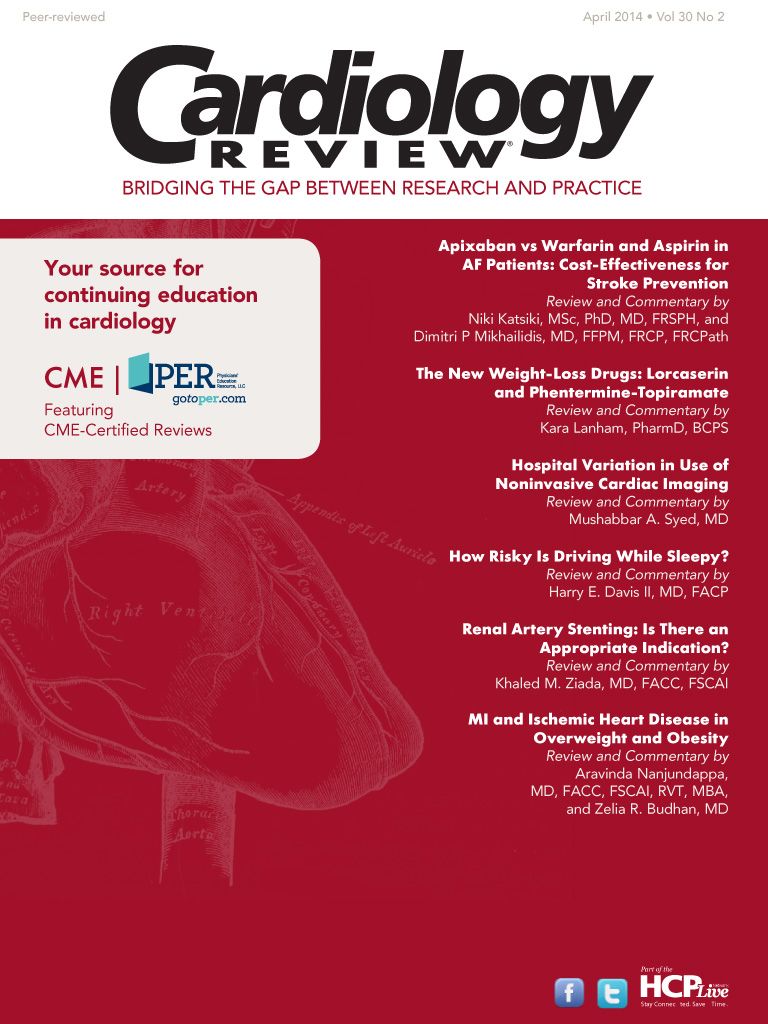Publication
Article
Cardiology Review® Online
Spring At Last!
Author(s):
Editor-in-Chief Debabrata Mukherjee, MD, MS, FACC, previews this issue's illuminating content.

Debabrata Mukherjee, MD, MS, FACC
Editor-in-Chief
After a brutal winter, particularly for those in the Midwest and on the east coast, spring is finally in the air. I hope everyone had a nice spring break with his or her family and that all are eager to do some insightful cardiology reading.
We touch on several clinical conundrums in this issue that I am sure our readers will find illuminating. Dr. Aravinda Nanjundappa discusses whether overweight and obesity, independent of the presence or absence of metabolic syndrome, correlates with an increased incidence of myocardial infarction and ischemic heart disease. He suggests that obesity and overweight are important risk factors and should be addressed in all patient populations similar to risk factors such as hypertension, diabetes mellitus, smoking, and hypercholesterolemia.
Dr. Harry Davis delves into sleepiness, sleep hygiene, sleep disorders, and driving risk among highway drivers, and states that raising awareness about the risks of chronic sleepiness while driving remains a major challenge for road-safety campaigns. He goes on to say that patients suspected of having obstructive sleep apnea should be asked about daytime sleepiness, especially about falling asleep unintentionally during the day.
Dr. Mushabbar Syed discusses hospital variation in use of noninvasive cardiac imaging, and informs us that routine noninvasive cardiac imaging testing may not be necessary in patients suspected of coronary ischemia. This practice not only increases the downstream resource utilization but also does not appear to provide significant benefit in terms of improved patient outcomes.
Dr. Kara Lanham evaluates the new weight-loss drugs, lorcaserin and phentermine-topiramate, and opines that while there are not yet data showing any significant CV risk associated with phentermine- topiramate and lorcaserin, with the large population of patients that may take these medications, time and real-world experience will provide stronger evidence either in favor of or opposed to the safety of these new agents. Until then, prescribers should be extra cautious about monitoring patients’ response to these agents and discontinue them if desired weight loss (5% of body weight) is not achieved within 12 weeks of starting to take either drug, per the labeling of the agents.
Drs. Niki Katsiki and Dimitri Mikhailidis dissect the role of apixaban versus warfarin and aspirin in atrial fibrillation (AF) patients and assert that apixaban is a cost-effective alternative to warfarin and aspirin for the prevention of thromboembolic events in AF patients, regardless of baseline stroke risk and international normalized ratio (INR) control. However, a key issue is which novel anticoagulant to use in each case, taking into consideration not only patient characteristics (eg, chronic kidney disease, older age, history of coronary heart disease, stroke, or transient ischemic attack) but also cost-effectiveness. Head-to-head trials in matched populations are needed to answer this question.
Dr. Khaled Ziada looks at appropriate indications for renal artery stenting and thinks that medical therapy should be first-line treatment for individuals with renal artery stenosis, but future studies need to address clinical situations in which renal revascularization should be considered, such as failure of medical therapy to achieve goals and the associated critical presentations in renal artery stenosis patients such as congestive heart failure, recurrent pulmonary edema, and/or unstable angina.
Ms. Jackie Syrop (our tireless and astute managing editor) has put together a succinct summary of several key late-breaking clinical trials presented at the ACC meeting, which I am sure you will find useful reading. In our clinical forum, Drs. Alison Bailey, Ragavendra Baliga, Sucheta Gosavi, Marian Limacher, and JoAnn Manson provide a lively commentary on the new cholesterol guidelines and risk calculator that were issued by the American Heart Association and the American College of Cardiology in November 2013. I am sure you will find the debate enjoyable and insightful.
I hope that you will find these commentaries to be valuable and enjoyable. I encourage you to share your insights, thoughts, and personal experiences on the myriad topics touched upon in this issue. On a broader level, I would love to hear feedback on how we can make this journal the best cardiology journal that reviews contemporary literature. My goal continues to be to make you look forward to every issue of Cardiology Review.
Debabrata Mukherjee
Editor-in-Chief






